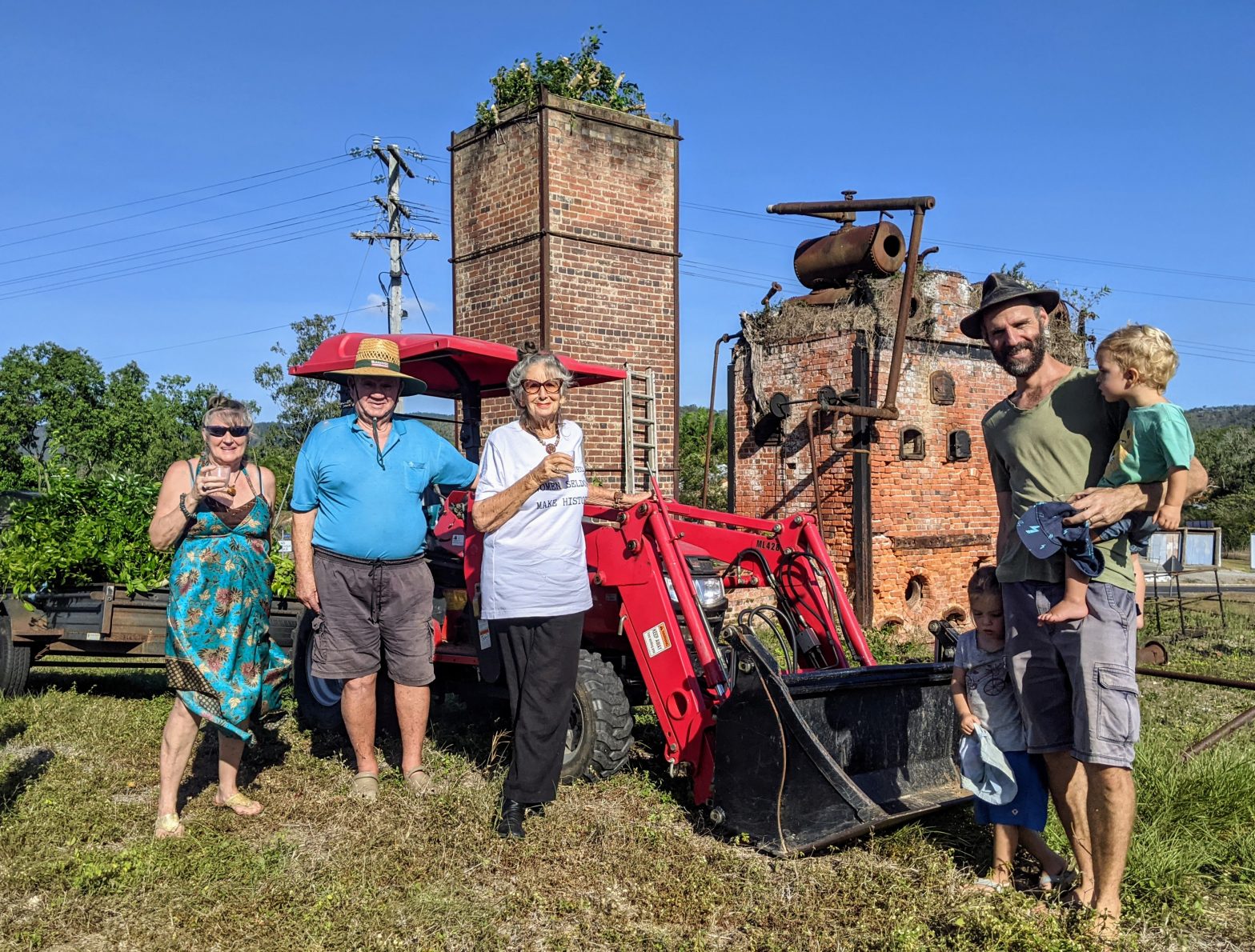An energetic and enthusiastic crew attended our first effort to trim the Boiler Fig.
The event was held, by custom, on the Summer Solstice (21 Dec 2021).
———————
The Annual Story of Trimming the Tree
The pioneers thought there would never be an end to the timber, but by the 1980’s it was clear that the industry would have
to change radically. It did not change, so the local industry was shut down by activists who wanted to ensure some forests were saved for the future.
Because they were inflexible and failed to adapt, the people running the mills crashed the whole native hardwood timber industry, causing widespread hardship.
Perhaps a similar situation faces our world today as we look into a troubled future where unlimited consumption is feeding the probability of terrible environmental and social collapse.
It is here that we introduce the noble, troublesome fig tree. Specifically, the Ficus virens growing out of the chimney.
The fig is considered the “Queen of the Rainforest”, a species as
old as the dinosaurs and remarkable for its ability to nourish, enliven, and support the living abundance of rainforest country. The Indigenous people of this area knew its secrets and had the patience to listen and learn from its wisdom.
The JM Johnston sawmill was set up to convert the living forests into a cash crop. A generation of “settlers” chopped through the forests in order to make a living in a capitalist system.
Now the fig tree has taken root in the chimney. As surely as the sawmill sliced up the trees, the patient fig would destroy the sawmill. It’s a classic story of winner take all. If the sawmill wins, the fig has to die. If the fig wins, the sawmill will be destroyed.
Is that the end of the story? Or is some kind of third story possible? Something new, arising between “all money” or “all fig”?
With this hope in mind, we have decided to approach the situation with humility and curiosity. The fig is singing an ancient story of flourishing and the boiler is just another sort of habitat for it to colonise and call home. The people who came here to devour the forests were seeking a new home too.
Is it possible we can contemplate these entwined stories and find a more abundant conversation arising in mutual recognition?
That’s the question.
So, every year, we trim the fig, but we don’t try to kill it. We seek to maintain a creative tension, a living poetry, that could help guide us in the uncertain future ahead.


